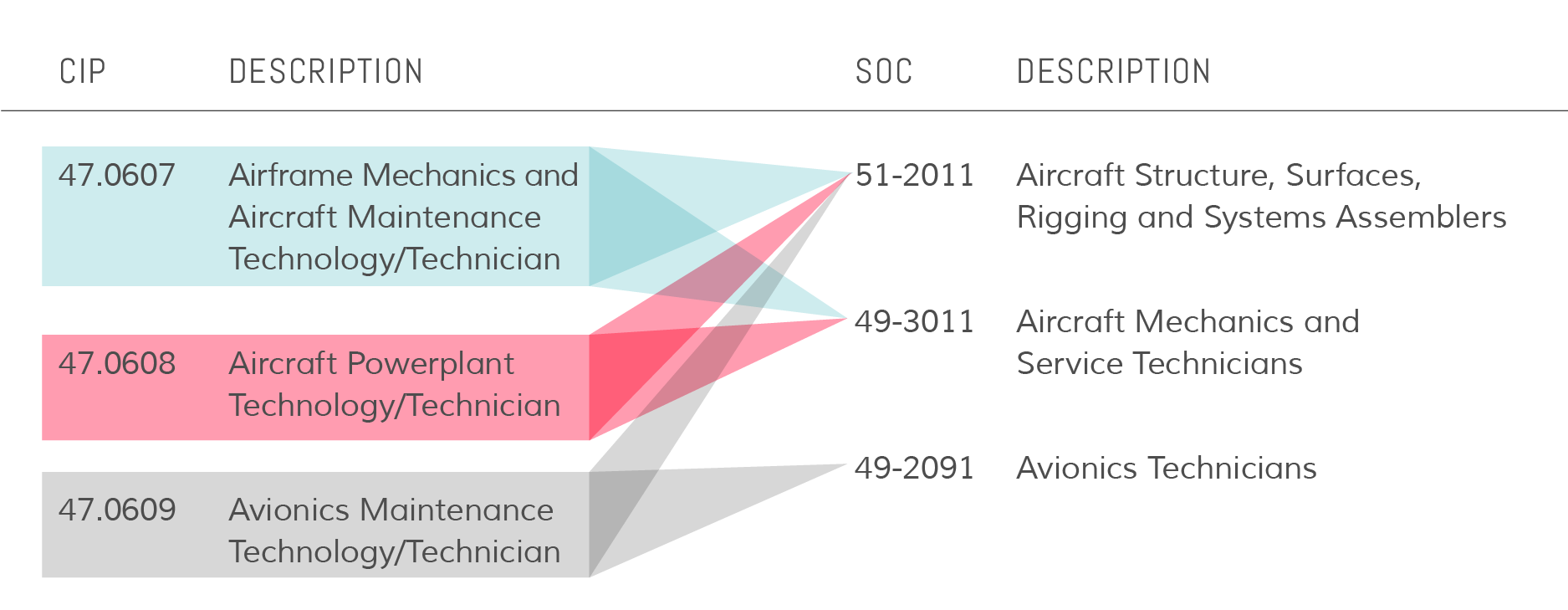 Loading...
Loading...
Welcome
This Talent Pipeline shows supply and demand of the workforce in Seattle-King County. It draws on occupation forecasts to calculate surpluses and shortages of specific jobs. This information allows the Workforce Development Council and industry leaders to prepare for the workforce challenges of tomorrow. In addition, the Talent Pipeline helps education professionals design programs and training curricula to meet the needs of local employers.
|
|
King County Talent PipelineThe dashboard below compares the projected demand of occupations to supply, which is made up of the number of local graduates (Graduate Supply) and unemployment insurance claimants (UI Claims). The grey sections below, grouped by education level, expand to show Talent Pipeline forecasts for each occupation. Use the filters to view the dashboard by specific criteria. *Occupations are grouped by education requirements set by the Bureau of Labor Statistics. The education requirements are generalized for all industries and are set at the national level. Education standards for occupations may differ among sectors. |
 Loading Dashboard Data...
Loading Dashboard Data...| Total Demand | GAP: | |
| Total Supply |
There are no results for these filters.
Please expand your filter selection.
Institution Map
The size of each institution shown above correlates to its number of graduates eligible for the selected industry.
Learn more about the data and analysis here
|
|
Occupation Matrix Across IndustriesThis matrix shows how occupations fall into major sectors. Use the View By options to display occupations by the number of jobs in 2015, surplus and shortage, or the percentage of employment found in each sector. In the number of jobs display, areas of high concentrations of jobs are shaded in blue. The matrix provides a snapshot of the types of jobs that comprise each sector, and shows which occupations fall under multiple sectors. When filtering by industry, you are selecting occupations that are part of that industry. The matrix shows all industries in which those occupations are found. This display illustrates the other sectors in King County that compete for specific occupations. |
VIEW BY
- Number of Jobs, 2015
- Surplus & Shortage
- Percent in Industry
LEGEND
- Surplus (Supply is 50% greater than Demand)
- Supply is within 5% of Demand
- Shortage (Supply is 50% less than Demand)
Thank you for your patience as the Matrix data loads.
 Loading Matrix Data...
Loading Matrix Data...INDUSTRY: MAJOR SECTOR
| * Totals for specific industries are based on a subset of occupations. See methods for more detail. |
There are no results for these filters.
Please expand your filter selection.
|
|
Methods |

Methods
This Talent Pipeline shows supply and demand of the workforce in King County. It draws on occupation forecasts to calculate surpluses and shortages of specific jobs. Expand each section below to see the data sources and methodology that composes the Talent Pipeline model.
The data for employment is defined by the four-digit North American Industry Classification System (NAICS) and the data for occupations is defined by the six-digit Standard Occupational Classification (SOC) system. Graduates are defined by Classification Instructional Program (CIP) codes. These classifications standardize industry, occupation and graduate data. Crosswalks between NAICS and SOC, and CIP and SOC codes help define the elements of industry definitions, demand and supply.
The supply data in the Talent Pipeline model consists of graduates from institutions within King County (Graduate Supply), as well as the number of unemployed insurance claimants (UI Supply).
The number of graduates matching an occupation are determined by using the NCES Program to Occupation crosswalk. A portion of regional graduates will leave the region to look for work outside of King County. The details of each Industry’s graduate retention rate can be found in the Industry Definition section.

Graduate data only measures the number of individuals that complete programs at postsecondary institutions, so high school graduates are not included among graduate data. Although many high school graduates may be appropriately qualified for certain positions, the supply of graduates that can be expected to enter into a particular occupation or industry cannot be measured.
Apprenticeships are not included among supply estimates. A key feature of apprenticeship programs is on-the-job training, therefore these individuals are counted within occupational employment estimates. If apprenticeships were to be added to supply they would be double-counted within the analysis.
UI Supply Data Source: Continued unemployment claimants by occupation for King County in January 2014, published by the Washington State Employment Security Department (ESD).
Grad Supply Data Source: Number of graduates by degree program for King County institutions during the 2015-2016 academic year, published by the National Center for Education Statistics (NCES) in the Integrated Postsecondary Education Data System (IPEDS). Download the data here.
Program to Occupation Crosswalk, National Center for Education Statistics (NCES) Integrated Postsecondary Education Data System (IPEDS) with Standard Occupational Classification (SOC) System, published by the Bureau of Labor Statistics (BLS).
Demand figures are forecasts of filled occupations, or the point of equilibrium between supply and demand. Demand is likely underestimated because the forecasts aim to show realized hires, and does not account for unmet demand.
Annual demand is driven by two factors, growth and turnover. This includes openings created by employees exiting to retire, move or change occupations. It does not include openings created by employees changing jobs within the same occupation and area.
Demand Data Source: Long-term occupation forecasts for King County in 2020-2025, published by the Washington State Employment Security Department (ESD).
Industry definitions use 4-digit NAICS codes. Occupations of focus are determined by a minimum number of jobs in that industry, a percentage of graduates retained in King County, and a minimum percentage of employment concentrated in the industry.
Industry-Occupation Matrix Data Source: Seattle-King County Workforce Development Area 2015, Washington State Employment Security Department (ESD). Download the data here.
| Sector Group | Industry | NAICS Definition | Minimum Share of Occupations in Cluster | Minimum Number of Jobs in Cluster | Graduate Retention Rate |
|---|
Graduate and UI supplies are pooled and compared to forecasted annual average openings to calculate shortage or surplus for each occupation of focus. The Industry-Occupation Matrix is used to determine the proportion of graduates and unemployment claimants that can be expected to work in the industry of focus.
Summaries by minimum education requirements are used to display magnitude of supply and demand only, as not all occupations with the same minimum education requirement can be transferrable. Additionally, the talent gap does not differentiate qualified candidates by their actual level of experience. Therefore, entry level candidates and experienced candidates are counted equally among supply.
Annual median wage and location quotients Data Source: Occupational Employment Statistics, Seattle-Tacoma-Bellevue MSA, published by the Bureau of Labor Statistics (BLS).
Other Top Occupations Data Source: Career Changers Matrix, O*NET Resource Center.
- Demand: Annual forecasts of filled occupations.
- UI Supply: The number of unemployed insurance claimants.
- Graduate Supply: The number of people with a degree or certificate from an institution, or college, King County.
- Gap: The difference between supply and demand. A negative value shows a shortage and a positive value shows a surplus.
- Surplus: More qualified candidates for a job than openings.
- Shortage: More openings for a job than qualified candidates.
- CAGR: The compound annual growth rate (CAGR) measures growth over a ten-year period.
- Location Quotient: The location quotient represents the ratio of an occupation’s share of employment in a given area to that occupation’s share of employment in the U.S. as a whole. For example, an occupation that makes up 10 percent of employment in a specific metropolitan area compared with 2 percent of U.S. employment would have a location quotient of 5 for the area in question.
- Transferrable Occupations: Other occupations a person may be qualified for.
- Major Industry Sector: A general description of industries. They are defined by grouping two-digit NAICS codes.
- Occupation Category: A general description of occupations. They are defined by two-digit SOC codes.
- Education Requirements: The minimum amount of education a person must have to be qualified for an occupation. These are national requirements and may be different in some regions or industries.
- Analysis Type: The Talent Pipeline analysis can be done across all industries or only for companies within the cluster. When viewing analysis for companies within the cluster, the totals shown are the number of occupations found within the NAICS codes used to define the cluster only.
- Percent Jobs in Industry: The percentage a certain occupation is found within the selected industry.
- Cluster: A selected grouping of NAICS codes used in the Talent Pipeline analysis.
- Industry vs Sector: Sector is a generalized term for multiple industries.
- Institution:: A higher education institution (college, vocational school) in King County.


